Spanish Fencing Notation Part 1 – Vector Notation
(8/20/2009)
In the Italian fencing system, fighting is broken up into pieces of time called “tempi” or “fencing times” in English. For example, a fencing action might take place in a single tempo (one unit of fencing time), mezzo tempo (a half tempo), or due tempi (two times). It is a useful tool for teaching timing to a student and an action with less tempi is generally considered more desirable.
The Spanish fencing science takes the idea of tempi even farther by using a vector-based system of notating actions through movements.
Aristotle states in his book Physics “Time is the numeration of continuous movement.”
By this definition, we can reexamine tempi as the summation of different motions. In the Spanish science all fencing actions are described as “movements.” There are movements of the blade and footwork to move the body. By using the two together, we can not only understand fencing time, we can also create a shorthand notation for describing complex actions and their counters.
The Spanish fencing authors describe blade actions as a series of varying length vectors through space. To be more clear a vector is a line with magnitude and direction.

A vector that indicates motion to the right of the reader. (This vector has an undetermined magnitude.)
This allows the Spanish notation to be extremely precise when describing the motions of the blade associated with specific actions like cuts, the Atajo, or even Italian actions described by Spanish authors.
To better illustrate this, observe this map of three dimensional space with a sword pointed along the Diameter (or Line of Direction) towards the adversary.
Natural Movement
(En español – Movimiento Natural )
A Natural motion is one in which the blade falls to the earth. More specifically, the blade is lowered. One example would be a vertical cut downwards.
Violent Movement
(En español– Movimiento Violento)
A Violent motion is one in which the blade rises. One example might be the chambering of a vertical cut.
Forward Movement
(En español – Movimiento Accidental)
A Forward motion is when the blade travels toward the adversary along the Diameter (Line of Direction). One example would be a thrust.
Backward Movement
(En español – Movimiento Extraño)
A Backward motion is when the sword is withdrawn away from the adversary along the Diameter (Line of Direction). One example might be pumping the arm back to execute a jabbing attack. (This is not a recommended action, and Don Luis Pacheco de Narváez describes how to defeat this pumping of the weapon arm in an adversary.)
Offline Lateral Movement
(En español -Movimiento Remiso)
An Offline Lateral motion is when the point of the weapon is carried away from the Diameter (Line of Direction) either to the left or right. Notice that the Spanish create a special case for movements that bring the point away from the target. It might be tempting to merely use lateral movements as descriptors but the Spanish notation relates specifically to removing the threat from the adversary. This might be a parry or the chambering of a horizontal cut.
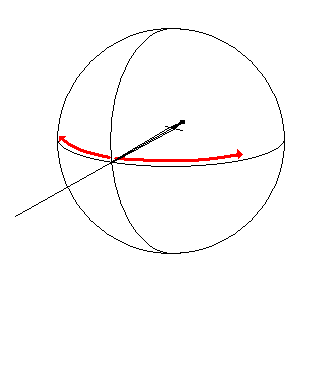
In an Offline Lateral Movement the blade travels either right or left away from the adversary. (The act of removing the point from presence to one side or the other.)
Aligning Lateral Movement
(En español – Movimiento de Reducción)
An Aligning Lateral motion is when the blade is returned from either the left or right back to the Diameter (Line of Direction). It is interesting to note that bringing the weapon across the Diameter is counted as two distinct movements. If the point is offline, bringing it towards the Diameter is an Aligning Lateral Movement, but when it crosses the Diameter and continues traveling in the lateral plane without stopping this becomes an Offline Lateral Movement. This is very useful for indicating the different tactical situations that are possible when a blade is leaving or entering presence. An Aligning Lateral Movement might be the delivery of a horizontal cut or bring the weapon back into line after the adversary has executed a beat.
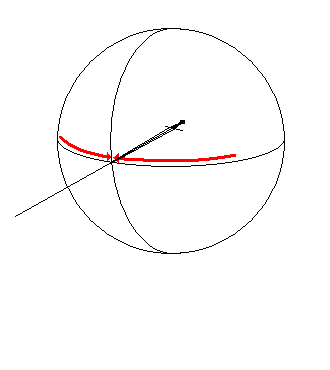
In an Aligning Lateral Movement the blade travels either right or left towards the Diameter and towards the adversary. (The act of returning the point into presence from one side or the other.)
Mixed Movement
(En español – Movimiento Mixto )
A Mixed Movement is a single motion that is a combination of two blade movements that don’t conflict. For example an Offline Lateral Movement can be mixed with a Violent Movement in a single motion to form a Mixed Movement.
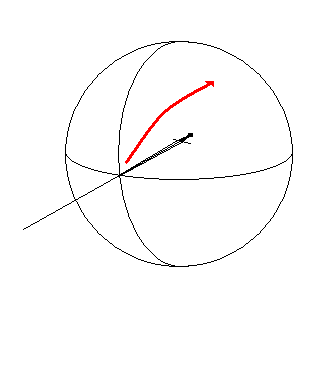
In this image we see a mixed Movement consisting of a Violent Movement and an Offline Lateral Movement in a single Mixed Movement.
Counting Time Through Motion
Like the Italian system we can count time using the Spanish notation. An action with fewer movements is more desirable than an action with a greater number of movements.
Let’s compare two actions:
Diagonal Reverse (Riverso Squalembrato in Italian)
- Mixed Movement combining an Offline Lateral Movement to the left and a Violent Movement in order to chamber the cut over the left shoulder
- Mixed Movement combining an Aligning Lateral Movement and a Natural Movement to deliver the cut
Thrust
- Forward Movement along the Diameter to deliver the thrust
Description of Defense or Counteroffense
Because the Thrust requires fewer movements than the Diagonal Reverse it can defeat the cutting attack in the first movement. In addition, we can use the counted movements of the adversary’s action to give the reader a guide to the timing of defense or counteroffense.
For example:
Countering the Diagonal Reverse
In the adversary’s first movement as the cut is chambered the fencer may strike with a thrust.
During the adversary’s second movement, the fencer may defend by placing the Atajo.
Final Notes
The Spanish notation is system agnostic so it can be applied to any weapon or tradition of fencing. In historical Spain, authors used this notated system of Movements to describe the actions of the single-handed sword and the two-handed sword called the Montante. The AEEA fencers in Spain today also use Destreza’s science and notation to analyze and teach the swordplay of other non-Spanish authors as well like Fiore.
~Puck


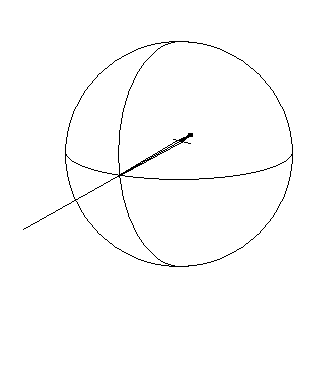
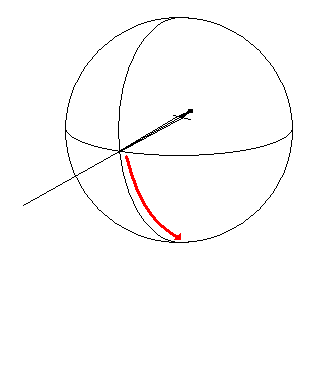
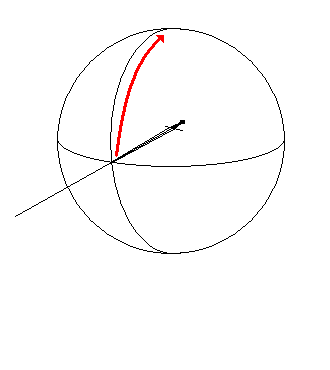
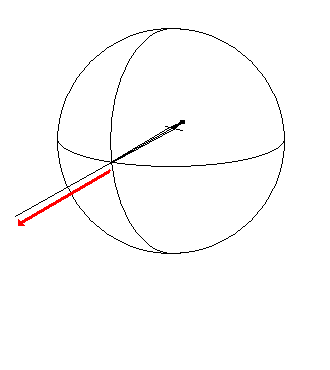

I like this manner of presentation a lot. Your last point brings to mind the following from de Brea (1805): “… la verdadera Destreza es una ciencia que consta de unos principios universales, y que esta no tiene patria, ni está limitada á este ó el otro pais, sino á todo el que tenga gusto y aplicación …” [Introduction, p. 2]
Two minor comments.
1) This isn’t very clear to me (of the remiss): “Notice that the Spanish create a special case for movements that bring the point away from the target. It might be tempting to merely use lateral movements as descriptors but the Spanish notation relates specifically to removing the threat from the adversary.”
For example, if I were pointing at my opponents línea diametral o vertical del pecho, and moved it towards the línea colateral izquierda or the línea vertical izquierda, the movement is still remiss (isn’t it?), but the point is not out of presence. Of course “threat from the adversary” might mean not “my threat from the adversary” but “the threat presented by the adversary,” but this again argues for a bit different explication, perhaps. Also, I don’t understand what “to merely use lateral movements as descriptors” means, by way of contrast. Also, why is this a special case? To me, the Spanish “fencing primitives” (to adapt a term from another domain) as applied to the plano superior (is that right?) use what in math we learned as Cartesian coordinates: remiss and reduced are movements along the X axis; violent and natural are movements along the Y axis; accidental and extraño are movements along the Z axis.
2) Though I appreciate the English translations, I have to say that my mind becomes a bit confused when there’s absolutely no connection to the Spanish. So, for example, in my previous note I used “remiss”, which in English is used differently, but these are technical terms, after all. If it is thought preferable to use English terminology, I’d prefer something like “offline Lateral Movement (remiss),” “aligning lateral movement (reduced)”, etc., but what I’d really like to see are one-word English renderings as I’ve done above, unless the English is completely misleading (“extraneous” for “extraño” would be an example of that, I think–sure: the movement is extraneous in the bad case of its use, mentioned above, but that’s an accidental correspondence).
But again, these 3-D images combined with vectors are fabulous. Even more so is the relation of the focus in the Spanish tradition on movement to Artistotle’s definition of time, and the vector-based approach to describing movement.
By Charles Blair on August 21, 2009 4:05 pm
Hola Charles,
Thanks for the critical feedback! I have started thinking of Destreza in two parts. There is the science we use to describe and understand swordplay and then there is the system and traditi0n of Spanish swordplay itself. Even with differences between national traditions, we all share the same mechanical physics and our science can be used to understand fencing from any country.
Item 1 – Presence: in this case, you are correct that a motion along the horizontal plane away from the diameter that doesn’t completely leave presence is still an Offline Lateral (moviemiento Remiso).
My point is that in the horizontal plane the Spanish could have said “Left movement” or “Right Movement” just as they did in the vertical plane. If a single vector is enough to describe all rising actions regardless of the origin of the motion, why not a single vector to describe all actions leading to the right?
The question then becomes **why** they create a special case to define everything relative to the line of the Diameter. Unlike rising motions, we have motion to the right that approaches the diameter (aligning or reduction) and motion to the right away from the diameter (offline or remiss).
The control of the centerline and the effect moving towards presence or away from presence has on the action provides us with key information about the action. I think the threat and control of the diameter is very important as to why this decision was made and the information we gain from breaking lateral motion into Aligning (reduction) and Offline (remiss) is important.
Item 2 – Translation: This is part of an ongoing discussion and it is a qualitative decision. I agree there is some merit in literal translation of the terms when there is an easy English cognate, but if the goal is an audience that can read the text and easily understand the concept, these two goals can conflict. While I still personally think in Remiss and Reduction, teaching these terms to an English-speaking audience during a seminar is not easy. (I typically had to create ridiculous mnemonics for the students like, “Remember, It would be remiss of me if I didn’t take my point offline.”)
If there is a way to translate the Spanish term into something that provides us with better understanding it is one valid choice. We had a very similar discussion in Spain and both positions were debated over jamon and coffee. I would personally like to see the original Spanish terms gradually replace the English translations, but until we have a community that works with the material regularly, I’m ready to accept a clearer translation of the term that conveys meaning more readily. It’s my hope that when we have an English-speaking Destreza community we see the same progression shown by students of Fiore where “Iron gate” was eventually replaced by “porta di ferro”.
I like “Aligning” and “Offline” as indicators precisely because both terms reference the **line** of the Diameter and that is our key indicator of the action. If these terms eventually vanish to be replaced with the cognates, I’m comfortable with that. I think it would be to weighty and distracting to continually add the cognate every time the term is used {Aligning Lateral Movement (reduction)} but I want the reader to see the original term as well which is why I preserved the original Spanish in the article.
Some terms such as ‘Atajo’ shouldn’t ever be translated but should rather be preserved as specific jargon and explained.
~P.
By puck on August 21, 2009 5:21 pm
[…] Yazan: sporgunlugu 1 Eylül 2009, Salı http://www.puckandmary.com/blog_puck/2009/08/spanish-fencing-notation-part-1-vector-notation/ […]
By Spanish Fencing Notation Part 1 – Vector Notation « Eskrim Aktüel on September 1, 2009 9:01 am
This is very neat stuff. And evidence for this system of thought is found in the old Spanish texts, I’m assuming?
Also, add another vote to using “movement of remission” and “movement of reduction” for your translations. Maby use “strange movement” for movimiento extrano as well.
Not only does it makes it easier for English readers to compare with the original Spanish terms but also it allows Spanish readers to follow your English a little better. In my opinion.
Students in your classes just need to get used to knowing what remission means!
By CH7 on September 5, 2009 6:30 am
Again, that is fair criticism and when we get more than 30 people in the United States that know the terms well enough to read the book, I would personally be happy to retire the English translations for the cognate translations. We have seen something similar with the Fiore community moving from “Iron Gate” to “Porta di Ferro” but that required years of community building before it was a possibility. We aren’t there yet and if the first goal of translation is comprehension of the material there are arguments both ways.
By puck on September 6, 2009 12:49 am
very interesting to pople that is beginig about VERDADERA DESTREZA.MY OPINION AT FIRST TIME ,YOU MUST WRITE THE SPANISH TERMINS WITH THE ENGLISH TRANSLATION IN ALL TERMINS.FIRST AT ALL YOU MUST WRITE THE DIFFERENCE BETWEEN “MOVENT” AND “COMPASES”,THESE TERMINS ARE THE “BIBLE “OF THE SPANISH VERDADERA DESTREZA.
IF I CAN HELP YOU ON TRANSLATIONS,IT’S NICE FOR ME .CONGRATULATIONS TO YOU,AND YOUR PROYECT.IESUVINCIT.SPAIN
By IESUVINCIT on October 14, 2009 10:32 am
MANDOBLE,IT’S TWO HANDS SWORD DIFERENT TO MONTANTE.WAS USED PRINCIPALLY AT XV CENTURY.
By IESUVINCIT on October 14, 2009 10:58 am
[…] LINK TO ARTICLE 1 […]
By Spanish Fencing Notation Part 5 - Strength of the Weapon | A Midsummer Night’s Blog on November 3, 2009 6:52 pm